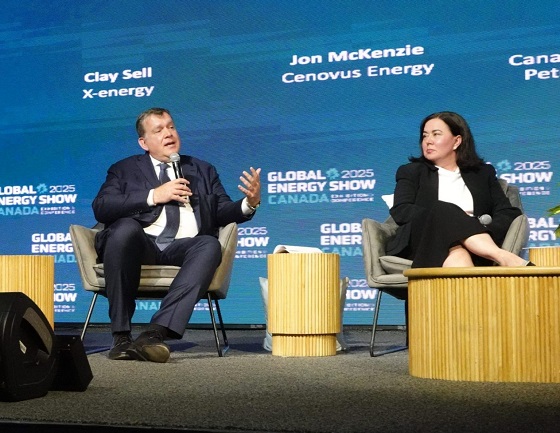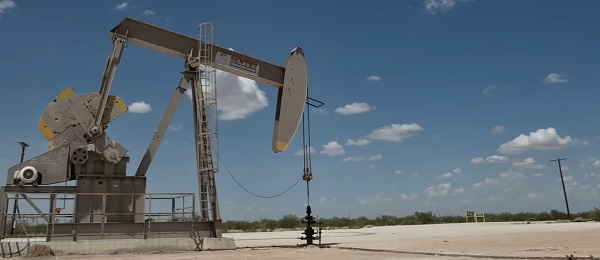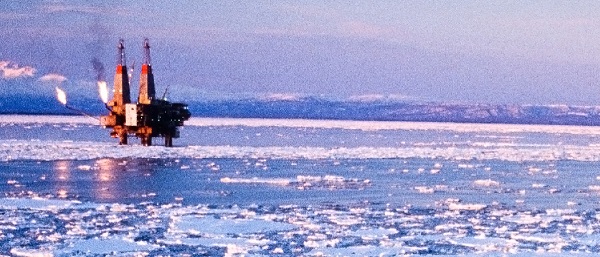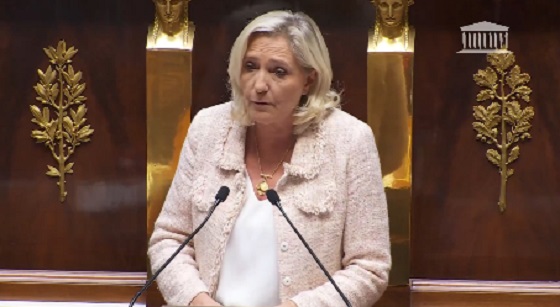Energy
How to realize Canada’s ambitions as an energy superpower

From Resource Works
If Prime Minister Mark Carney is to make good on his promise to make Canada an energy superpower that includes oil and gas, Alberta and B.C. will clearly need to be in the vanguard. But how can Canada accomplish energy superpower status in an era of energy transition and decarbonization — with its attendant promise of peak oil and gas — increasingly strained relations with Canada’s biggest energy trade partner — the U.S. — and domestic regulatory strangulation that has soured Canada’s investment climate? These were some of the topics explored Tuesday morning at the Global Energy Show Canada in Calgary, which organizers said was expected to draw 30,000 attendees. Briefly, the answer to these challenges is that the U.S. will remain a key partner in energy trade, despite Donald Trump’s best efforts to sour U.S.-Canada relations, global demand for oil and gas will continue to grow, and Canada just needs to get out of its own way through deregulation.”There is no peak in oil demand on the horizon,” said Haitham al Ghais, former secretary-general for OPEC. As for liquefied natural gas, Shell Canada president Stastia West said Shell is forecasting 60% growth in demand for LNG, with B.C. now poised to become a significant player. Should all proposed LNG projects and expansions in B.C. get financed, by 2030, Canada will have joined the ranks of a major players in the LNG sector.
B.C.’s two large LNG projects — LNG Canada and Ksi Lisims — and three smaller ones (Cedar, Woodfibre and Tilbury) would produce about 47.5 million tonnes per annum (MTPA). That represents about 28% of the 170 million MPTA of new LNG supply expected to come onto markets by 2030, according to Shell’s 2025 LNG outlook. Despite its raw energy abundance, Canada is emerging from a decade of self-doubt and squelched investment opportunities, driven in no small part by the notion that oil and gas is a sunset industry.

A global push for an energy transition presumed that the demand for conventional energy would decline. But as a number of speakers noted Tuesday, the role of renewable energy in the “energy transition” is turning out to be additive, not subtractive. Investment in renewables will continue to gain momentum, but not at the expense of conventional oil and gas. “We are not in an era of energy transition — we are in an era of energy addition,” said Clay Sell of X-Energy, a small modular reactor developer. All forms of energy will need to grow, he said, to meet the growing demand for energy. AI alone promises to be a huge new driver of energy demand.
Just four years ago, the International Energy Agency (IEA) pronounced that no new major investments in oil and gas development would be needed, based on net-zero commitments made by Paris Agreement signatories. Al Ghais said OPEC members had noted “serious concern” with the IEA’s “flip-flopping” in its forecasts, noting that, in recent months, the IEA’s executive director “once again stressed the importance of oil industry investments.” “We forecast that global primary energy demand is going to increase by a staggering 24% from now to 2050,” all Ghais said, adding that oil is expected to remain 30% of the energy mix in 2050. “Simply put, ladies and gentlemen, there is no peak in oil demand on the horizon,” al Ghais said. “The fact that oil demand keeps rising, hitting new records year on year, is a clear example. Our projections are that oil demand will surpass 120 million barrels a day by 2050.” He said cumulative investments in the oil sector are expected to total US$17.4 trillion between now and 2050. He added Alberta is well poised to meet some of that demand with lower emission oil, thanks to its leadership in carbon capture and storage.
“Innovation will be critical in assisting this industry in reducing greenhouse gas emissions going forward,” he said. “Canada has been at the forefront of carbon capture utilization and storage. “Alberta specifically is a global leader in harnessing this technology, and the province has extensive energy infrastructure and subsurface geological storage for CCUS.” Gaining and holding market share in a growing market is one of the big challenges for Canada. Its closest energy trade partner has become increasingly hostile, with U.S. President Donald Trump claiming the U.S. does not need Canadian oil and gas. Given that about 90% of Canada’s oil and gas exports currently go to the U.S, that could be a problem — if it were true.

Jon McKenzie, CEO of Cenovus Energy, said Canada should try to diversify Canada’s energy markets, but said it also needs to preserve its relations with the U.S. The two countries are simply too integrated to sever ties. “The reality is we are hard-wired into the U.S. system,” McKenzie said. “What we really need to do is be the adult in the room as these discussions continue. Because President Trump says he doesn’t need Canadian oil and gas, that doesn’t make it true. They need our oil and gas as much today as they have over the prior decades.” And increasingly, other countries will need Canadian oil and gas as well, underscoring the need for export infrastructure, like pipelines.B.C. is well-positioned to capture the Asia market for natural gas through LNG exports.
This summer, Canada will begin exporting LNG to Asia, as LNG Canada in Kitimat is commissioned. Shell’s 2025 LNG outlook notes investment in various natural gas infrastructure in India and China — new connections to the gas grid, regasification facilities and LNG fueling for heavy duty trucking — are driving demand growth for natural gas. While the outlook forecasts demand for LNG in Europe, Japan and South Korea will peak around 2035 and begin to decline, it forecasts demand growth in China, India and other parts of Asia, as well as growth overall in the marine sector through fuel switching. “Our view of demand growth is up to 60% by 2040,” said Stastia West, Canadian president and country chair of Shell Canada.
The billion-dollar question on many minds in B.C. is whether the partners in LNG Canada will pull the trigger on a final investment decision for a Phase 2 expansion, and whether the Ksi Lisims LNG project north of Prince Rupert will be approved and financed. Shell is one of the five partners in LNG Canada. Asked what the timelines might be for an FID on Phase 2, West said that decision depends on competitiveness, affordability and “stakeholder needs.”
“At the end of the day, for us at Shell…it will depend on how that decision fits into the portfolio of opportunities that we have ahead of us to make decisions on at the time. But I think we’re excited about the opportunity, and we’re happy with how all of that is progressing.”
While there has been an encouraging vibe shift in Canada for the oil and gas sectors, barriers to investment in energy remain. Some of the barriers cited Tuesday include Bill C-69, oil and gas emissions caps, a West Coast oil tanker ban, and provincial opposition to new oil and gas pipelines. Lisa Baiton, CEO of the Canadian Association of Petroleum Producers (CAPP), offered a prescription for regulatory bottlenecks. “Let’s get out of our own way here in Canada,” she said.
Energy
The IEA’s Peak Oil Fever Dream Looks To Be In Full Collapse


From the Daily Caller News Foundation
U.S. Energy Secretary Chris Wright warned International Energy Agency (IEA) head Fatih Birol in July that he was considering cancelling America’s membership in and funding of its activities due to its increasingly political nature.
Specifically, Wright pointed to the agency’s modeling methods used to compile its various reports and projections, which the Secretary and many others believe have trended more into the realm of advocacy than fact-based analysis in recent years.
That trend has long been clear and is a direct result of an intentional shift in the IEA’s mission that evolved in the months during and following the COVID pandemic. In 2022, the agency’s board of governors reinforced this changed mission away from the analysis of real energy-related data and policies to one of producing reports to support and “guide countries as they build net-zero emission energy systems to comply with internationally agreed climate goals” consistent with the Paris Climate Agreement of 2016.
Dear Readers:
As a nonprofit, we are dependent on the generosity of our readers.
Please consider making a small donation of any amount here.
Thank you!
One step Birol and his team took to incorporate its new role as cheerleader for an energy transition that isn’t actually happening was to eliminate the “current policies” modeling scenario which had long formed the base case for its periodic projections. That sterile analysis of the facts on the ground was replaced it with a more aspirational set of assumptions based on the announced policy intentions of governments around the world. Using this new method based more on hope and dreams than facts on the ground unsurprisingly led the IEA to begin famously predicting a peak in global oil demand by 2029, something no one else sees coming.
Those projections have helped promote the belief among policymakers and investors that a high percentage of current oil company reserves would wind up becoming stranded assets, thus artificially – and many would contend falsely – deflating the value of their company stocks. This unfounded belief has also helped discourage banks from allocating capital to funding exploration for additional oil reserves that the world will almost certainly require in the decades to come.
Secretary Wright, in his role as leading energy policymaker for an administration more focused on dealing with the realities of America’s energy security needs than the fever dreams of the far-left climate alarm lobby, determined that investing millions of taxpayer dollars in IEA’s advocacy efforts each year was a poor use of his department’s budget. So, in an interview with Bloomberg in July, Wright said, “We will do one of two things: we will reform the way the IEA operates, or we will withdraw,” adding that his “strong preference is to reform it.”
Lo and behold, less than two months later, Javier Blas says in a September 10 Bloomberg op/ed headlined “The Myth of Peak Fossil Fuel Demand is Crumbling,” that the IEA will reincorporate its “current policies” scenario in its upcoming annual report. Blas notes that, “the annual report being prepared by the International Energy Agency… shows the alternative — decades more of robust fossil-fuel use, with oil and gas demand growing over the next 25 years — isn’t just possible but probable.”
On his X account, Blas posted a chart showing that, instead of projecting a “peak” of crude oil demand prior to 2030, IEA’s “current policies” scenario will be more in line with recent projections by both OPEC and ExxonMobil showing crude demand continuing to rise through the year 2050 and beyond.
Whether that is a concession to Secretary Wright’s concerns or to simple reality on the ground is not clear. Regardless, it is without question a clear about-face which hopefully signals a return by the IEA to its original mission to serve as a reliable analyst and producer of fact-based information about the global energy situation.
The global community has no shortage of well-funded advocates for the aspirational goals of the climate alarmist community. If this pending return to reality by the IEA in its upcoming annual report signals an end to its efforts to be included among that crowded field, that will be a win for everyone, regardless of the motivations behind it.
Energy
Trump Admin Torpedoing Biden’s Oil And Gas Crackdown


From the Daily Caller News Foundation
By Audrey Streb
The Trump administration is rolling back President Joe Biden’s restrictions on oil and gas, planning 21 lease sales in 2025 — a sharp contrast to Biden’s first year, which saw none.
The Department of the Interior (DOI) and the Bureau of Land Management (BLM) have already held 11 lease sales under Trump generating over $110 million for Americans, and plan to host 10 more in 2025, the agency told the Daily Caller News Foundation. While the Biden administration imposed a sweeping offshore drilling ban and greenlit a record-low offshore oil and gas leasing schedule, the Trump administration is working to reopen development on federal lands and waters.
“President Donald Trump has revived American energy. While the Biden administration left our energy resources to waste at the cost of taxpayers, Americans can feel relief knowing that they now have an administration laser focused on unleashing our domestic energy sources, lowering costs, and securing a more affordable and reliable energy future,” Interior Secretary Doug Burgum told the DCNF. “The number of new oil and gas lease sales simply speak for themselves.”
Bureau of Land Management (BLM) has reported 3,608 new oil and gas permits in Trump’s second term thus far, compared to 2,528 permits during the Biden administration, according to the DOI. Trump and the DOI have approved 43% more federal drilling permits than his predecessors had at the same point in their presidencies, according to the agency.
The DOI has also opened more than 450,000 acres of federal land for potential energy development, and the DOI and BLM are set to approve more drilling permits than any other fiscal year in the past 15 years, the agency said.
On his first day back in the Oval Office, Trump signed an executive order to “unleash American energy” and declared a national energy emergency. The One Big Beautiful Bill Act (OBBBA) further directed the DOI to open more domestic energy exploration opportunities, ordering the agency to “immediately resume onshore quarterly lease sales in specified states.”
Trump has emphasized bolstering conventional resources, which stands in contrast to Biden’s stifling of the oil and gas industry, as he froze liquified natural gas (LNG) exports, blocked the major Keystone XL pipeline and halted BLM lease approvals on his first day as president. Biden instead championed a green energy agenda, pushing for major wind and solar projects through billions in subsidies, loans and grants.
Notably, the National Oceanic and Atmospheric Administration (NOAA) previously confirmed to the DCNF that the Biden administration failed to adequately review the environmental impacts of certain offshore wind projects before approving them. The Trump administration has cracked down on offshore wind, halting many major projects and reviewing several more, with Burgum arguing that the energy resource the Biden administration favored is “not reliable enough” at an event on Sept. 10.
Additionally, gasoline prices have been dropping nationally in recent months, with costs hitting four-year lows headed into summer and Labor Day weekend, according to GasBuddy and the American Automobile Association. The average retail price for gasoline is projected to keep dropping due to falling oil prices, according to data from the Energy Information Administration.
“[Oil] prices are not set by current supplies. They’re set by future expectations,” Diana Furchtgott-Roth, director of the Heritage Foundation’s Center for Energy, Climate, and Environment, told the DCNF previously. “President Donald Trump is sending signals that the oil industry here is going to be very vibrant. He’s shrinking permitting time for fossil fuel projects, so expectations for fossil fuel supply in the United States are great.”
-

 espionage23 hours ago
espionage23 hours agoInside Xi’s Fifth Column: How Beijing Uses Gangsters to Wage Political Warfare in Taiwan — and the West
-

 Daily Caller2 days ago
Daily Caller2 days ago‘You Have No Idea What You Have Unleashed’: Erika Kirk Addresses Supporters For First Time Since Kirk’s Assassination
-

 Crime2 days ago
Crime2 days agoFormer NYPD Inspector Shares What Family Of Alleged Charlie Kirk Assassin Feared Before Turning Him In
-

 COVID-1916 hours ago
COVID-1916 hours agoWhy FDA Was Right To Say No To COVID-19 Vaccines For Healthy Kids
-

 Energy16 hours ago
Energy16 hours agoTrump Admin Torpedoing Biden’s Oil And Gas Crackdown
-

 Education1 day ago
Education1 day agoOur kids are struggling to read. Phonics is the easy fix
-

 International1 day ago
International1 day agoBrazil sentences former President Bolsonaro to 27 years behind bars
-

 Censorship Industrial Complex23 hours ago
Censorship Industrial Complex23 hours agoDecision expected soon in case that challenges Alberta’s “safe spaces” law






